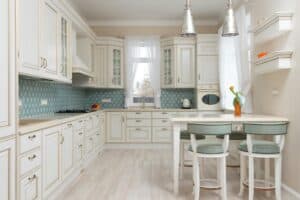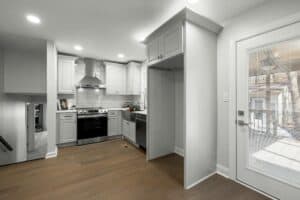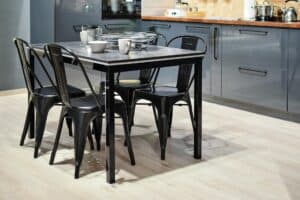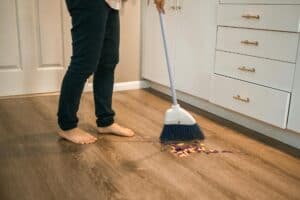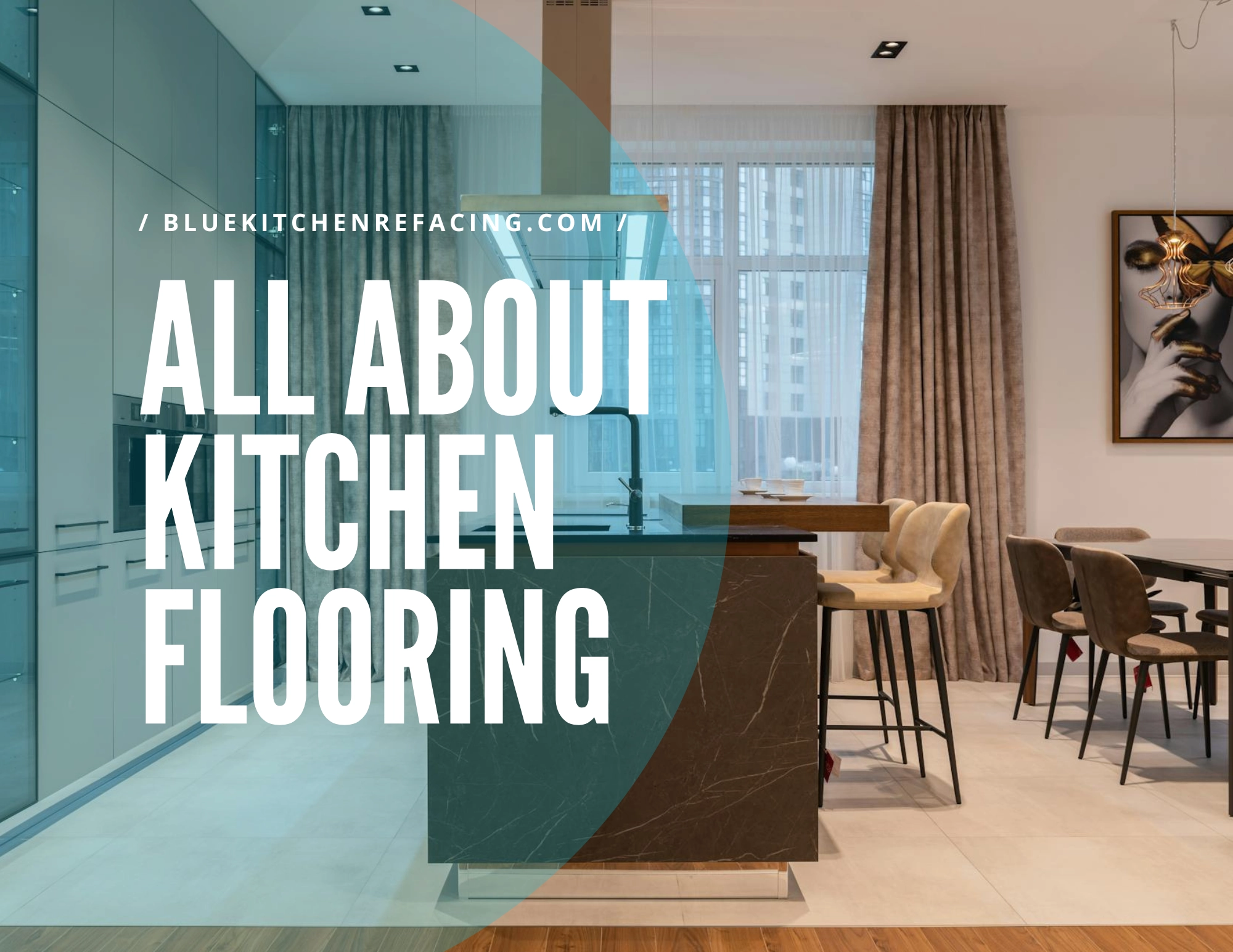
A Guide to Kitchen Flooring
Your kitchen floor is an investment in your home’s longevity and your daily comfort. It’s the foundation upon which countless meals are prepared, memories are made, and life unfolds. Given the daily onslaught of spills, heavy foot traffic, and temperature swings, choosing the right material is essential for maximizing both practicality and property value. This guide will look into the factors that influence your decision, helping you select a flooring solution that not only looks stunning but also stands the test of time, adding lasting value to your kitchen and your home.
Popular Kitchen Flooring Choices
Several flooring materials suit kitchens. Each material offers advantages and disadvantages.
Vinyl Flooring:
Vinyl offers budget-friendly water resistance and easy installation.Ceramic and Porcelain Tile:
Tile provides durability and water resistance, but installation requires more effort. Grout lines can trap dirt, demanding regular cleaning.Hardwood Flooring:
Wood creates a warm, inviting atmosphere. Engineered hardwood offers better water resistance than solid hardwood. Consider moisture and maintenance needs.Laminate Flooring:
Laminate mimics the look of wood or tile at a lower cost. It resists scratches and stains well. Select water-resistant options for kitchens.Natural Stone Flooring:
Stone provides a unique, high-end look. It requires sealing to resist stains and scratches. Stone can feel cold underfoot, but underfloor heating offers a solution.
Click here for more information on cabinet refinishing Toronto
Related Article: Which is Better for Kitchen Floors, Ceramic or Porcelain?
Durability and Maintenance
Kitchen floors endure heavy use. Durability matters. Easy cleaning simplifies maintenance. Vinyl and tile offer excellent water resistance. Hardwood requires more care to prevent water damage. Seal stone floors regularly to resist stains.
Low-Maintenance Options:
Vinyl, tile, and laminate require minimal maintenance.Moderate Maintenance Choices:
Engineered hardwood and sealed stone require regular cleaning and occasional sealing.Higher Maintenance Options:
Solid hardwood demands more frequent cleaning and careful attention to spills.
Related Article: How to Pick a Kitchen Floor?
Related Article: Should a Small Kitchen Have Light or Dark Floors?
Style and Design
Your kitchen’s style influences flooring choices. Consider color, pattern, and texture. Wood creates a classic look. Tile offers various design possibilities. Vinyl mimics the look of other materials effectively.
Traditional Styles:
Hardwood and natural stone complement traditional kitchens.Modern Aesthetics:
Large-format tiles and sleek vinyl suit modern kitchens.Versatile Options:
Laminate and some tile styles adapt to various aesthetics.
Related Article: What Kitchen Flooring Never Goes Out of Style?
Related Article: What Kitchen Flooring Adds the Most Value?
DIY or Professional?
Some flooring types permit DIY installation. Others require professional expertise. Vinyl plank and tile offer relatively easy DIY installation. Hardwood and natural stone installations benefit from professional experience. Evaluate your skills and the project’s complexity.
DIY-Friendly Flooring:
Vinyl plank, laminate, and some tile projects suit DIY installation.Professional Installation Recommended:
Hardwood, natural stone, and complex tile patterns often require professional installation.
Conclusion: Choosing the Right Kitchen Flooring
There’s no one-size-fits-all solution when it comes to kitchen flooring. Your ideal choice is a reflection of your unique needs and style. Whether you prioritize durability for a busy family, value the warmth of natural materials, or seek a modern, sleek aesthetic, the right flooring is out there. By thoughtfully considering your budget, lifestyle, and design preferences, you can tailor your kitchen to perfectly suit your needs, creating a space that is both practical and a true reflection of your personal taste.
Related Articles

Blue Malue Get in touch with Blue here.


